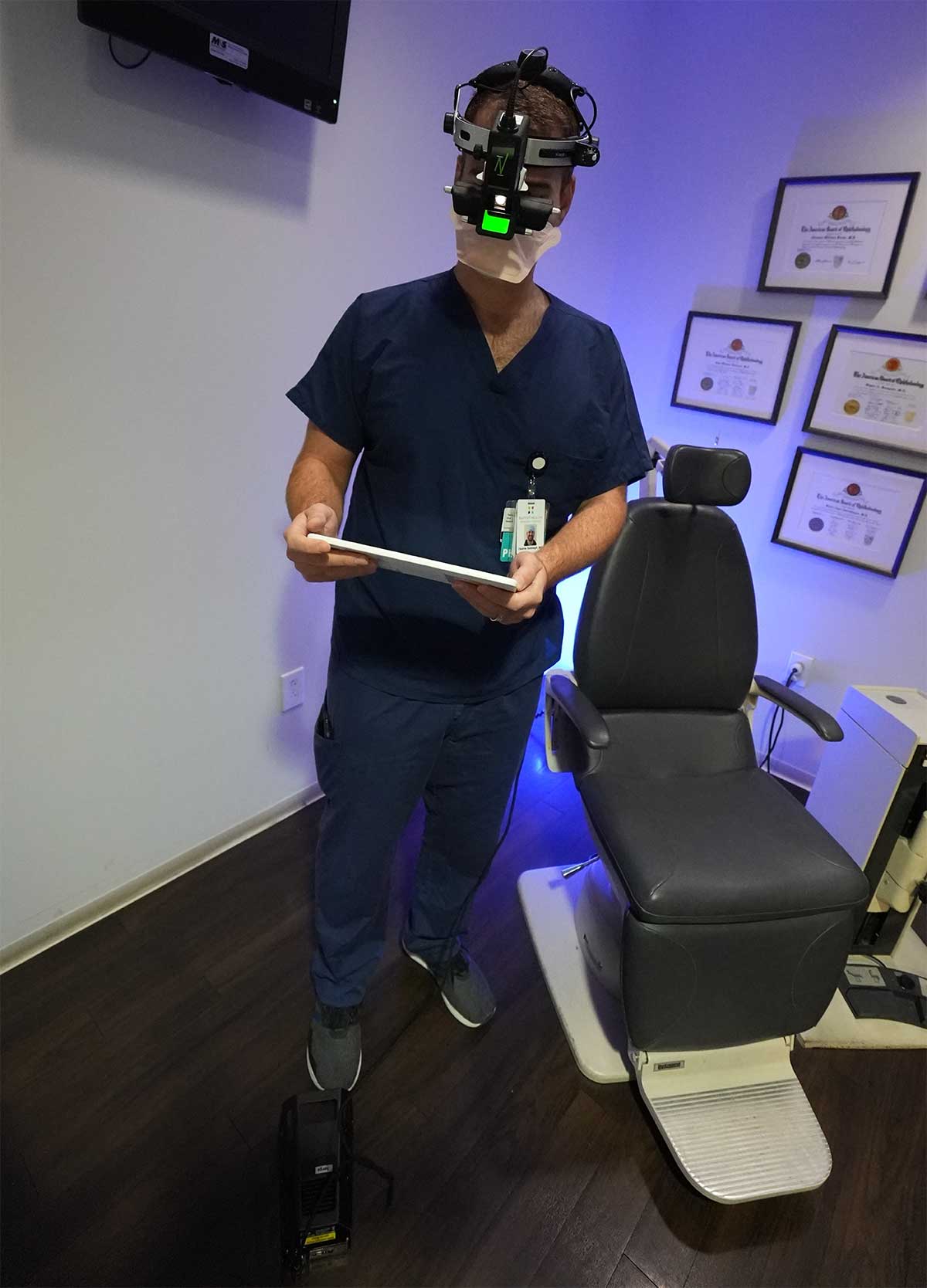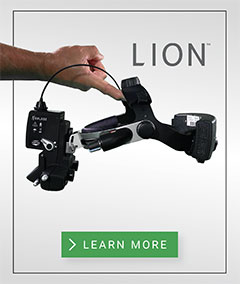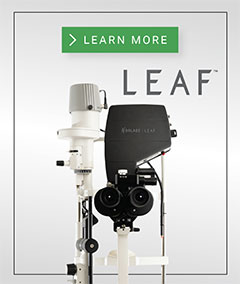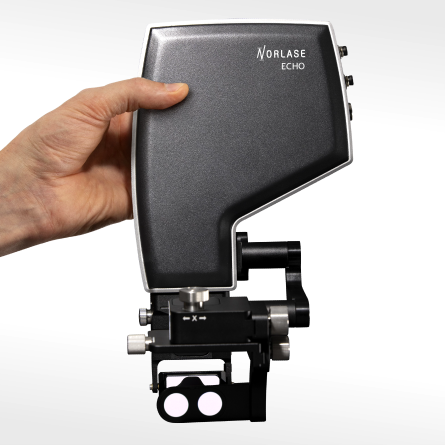My Early Experience with an integrated Laser Indirect Ophthalmoscope and Green Laser Photocoagulator
As a retina specialist that frequently uses green lasers to treat peripheral disease, I’m always open to learning about new, innovative technologies that deliver real, tangible value (and not just iterative improvements). Recently, my practice was lucky enough to acquire one of the first.
We’ve been very impressed with both the product itself, as well as the efficiency benefits it’s provided us.
The Skinny on Size and Portability
The LION’s size and portability is the first and most obvious advantage. To my knowledge, there’s nothing like it on the market in terms of portability.
The entire laser photocoagulator can be carried in one hand.
This has greatly benefited my practice as it has improved my clinic workflow and I can treat in any room. Typically, laser photocoagulator devices are bulky, difficult to move from room to room and require significantly more setup. Additionally, the LION Green Laser has a laser source in the indirect. There are no fibers (other than the power cable). Historically, fibers from previous Laser Indirect Ophthalmoscopes often break and require replacement which were costly and disruptive for the patient and our practice.
Easy Set Up, Easy Use, Easy Choice
The LION’s fast startup time and tablet operability, combined with its size profile, makes it quick to set up and easy to use, significantly reducing a rate-limiting step encountered with other retina lasers.

The laser boots up about as fast as a tablet device, cutting down set-up time from several minutes to several seconds. We’re typically ready to begin laser photocoagulation within 30 seconds of sitting a patient down. This has helped with treatment time and patient throughput.
The Beauty of A Detail-Oriented Build
The manufacturing quality of the device itself is also very impressive. Despite this being a first generation device, its design is extremely detail-oriented and far from iterative.
The indirect ophthalmoscope headset is well built, its lightweight and untethered design is ideal for ergonomics, and the device even features a micro USB-C charging port, improving compatibility. Plus, no cables means less maintenance, saving time and money in the long-term.
The LION’s size, ease of use, and device quality make it an excellent choice for any situation where we would perform indirect retinal photocoagulation. Here are the key clinical advantages we’ve realized since onboarding the technology.
Getting Valuable Time Back

If I encounter a patient with a retinal tear or proliferative retinopathy, for example, I no longer need to have a technician move them to a dedicated laser room and undertake a startup process spanning several minutes. Instead, I can have them sign a consent form on a tablet, bring in my indirect ophthalmoscope, and begin treatment.
Rethinking Our Use of Space
In addition to saving considerable time, implementing LION has allowed us to realize efficiency with our practice’s physical space. We no longer need a dedicated room for retinal photocoagulation, freeing up 3-5% of our practice’s total real estate. We’re now free to use that room for other purposes, potentially adding up to two additional exam rooms or an imaging suite.
We’re still learning the finer nuances of this device, but we are certainly impressed with its innovative design, user-friendly profile, and innate efficiency. We look forward to using this device to treat retinal disease in the months and years ahead, as well as seeing what future iterations of this technology may look like.




